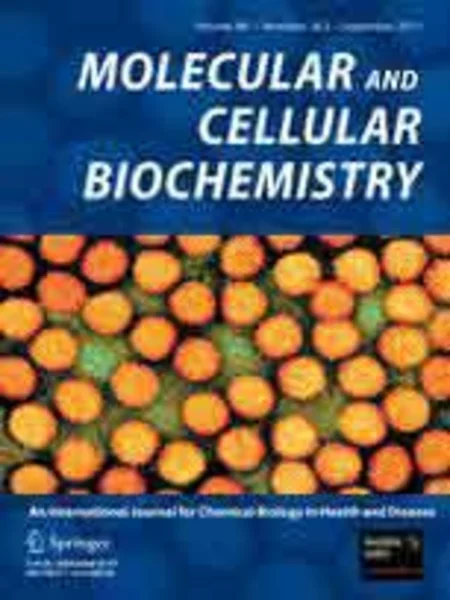-
distinctive microrna expression signatures in proton-irradiated mice
جزئیات بیشتر مقاله- تاریخ ارائه: 1392/07/24
- تاریخ انتشار در تی پی بین: 1392/07/24
- تعداد بازدید: 1139
- تعداد پرسش و پاسخ ها: 0
- شماره تماس دبیرخانه رویداد: -
proton particles comprise the most abundant ionizing radiation (ir) in outer space. these high energy particles are known to cause frequent double- and single-stranded dna lesions that can lead to cancer and tumor formation. understanding the mechanism of cellular response to proton-derived ir is vital for determining health risks to astronauts during space missions. our understanding of the consequences of these high energy charged particles on microrna (mirna) regulation is still in infancy. mirnas are non-coding, single-stranded rnas of ~22 nucleotides that constitute a novel class of gene regulators. they regulate diverse biological processes, and each mirna can control hundreds of gene targets. to investigate the effect of proton radiation on these master regulators, we examined the mirna expression in selected mice organs that had been exposed to whole-body proton irradiation (2 gy), and compared this to control mice (0 gy exposure). rna was isolated from three tissues (testis, brain, and liver) from treated and control mice and subjected to high-throughput small rna sequencing. bioinformatics analysis of small rna sequencing data revealed dysregulation of (p < 0.05; 20 up- and 10 down-regulated) 14 mouse testis, 8 liver, and 8 brain mirnas. the statistically significant and unique mirna expression pattern found among three different proton-treated mouse tissues indicates a tissue-specific response to proton radiation. in addition to known mirnas, sequencing revealed differential expression of 11 mirnas in proton-irradiated mice that have not been previously reported in association with radiation exposure and cancer. the dysregulation of mirnas on exposure to proton radiation suggest a possible mechanism of proton particles involvement in the onset of cell tumorgenesis. in summary, we have established that specific mirnas are vulnerable to proton radiation, that such differential expression profile may depend upon the tissue, and that there are more mirnas affected by proton radiation than have been previously observed.
مقالات جدیدترین رویدادها
-
استفاده از تحلیل اهمیت-عملکرد در ارائه الگوی مدیریت خلاقیت سازمانی و ارائه راهکار جهت بهبود
-
بررسی تاثیر ارزش وجوه نقد مازاد بر ساختار سرمایه شرکت های پذیرفته شده در بورس اوراق بهادار تهران
-
بررسی تأثیر سطح افشای ریسک بر قرارداد بدهی شرکت های پذیرفته شده در بورس اوراق بهادار تهران
-
بررسی تأثیر رتبه بندی اعتباری مبتنی بر مدل امتیاز بازار نوظهور بر نقد شوندگی سهام با تأکید بر خصوصی سازی شرکت ها
-
تأثیر آمیخته بازاریابی پوشاک ایرانی بر تصویر ذهنی مشتری پوشاک ایرانی (هاکوپیان)
-
بررسی رابطه هوش هیجانی با سبک های رهبری تحولی، تبادلی و آزاد گذار مورد مطالعه : بیمارستان های دولتی شهر اهواز
-
جایگاه و نقش فعالی تهای عملی (کارآموزی) در برنامه های درسی رشته های علوم انسانی
-
دل نیارامد به گفتار دروغ (بررسی صدق در مثنوی)
-
تحلیل چندفرکتالی نوسانات روندزدایی شده جریان رودخانه صوفی چای
-
مروری بر استفاده از لایه های تقویت کننده جهت کاهش اثر زلزله در محل های دفن زباله
مقالات جدیدترین ژورنال ها
-
مدیریت و بررسی افسردگی دانش آموزان دختر مقطع متوسطه دوم در دروان کرونا در شهرستان دزفول
-
مدیریت و بررسی خرد سیاسی در اندیشه ی فردوسی در ادب ایران
-
واکاوی و مدیریت توصیفی قلمدان(جاکلیدی)ضریح در موزه آستان قدس رضوی
-
بررسی تاثیر خلاقیت، دانش و انگیزه کارکنان بر پیشنهادات نوآورانه کارکنان ( مورد مطالعه: هتل های 3 و 4 ستاره استان کرمان)
-
بررسی تاثیر کیفیت سیستم های اطلاعاتی بر تصمیم گیری موفق در شرکتهای تولیدی استان اصفهان (مورد مطالعه: مدیران شرکتهای تولیدی استان اصفهان)
-
الگوی پیشنهادی نظام مند برای سیاست گذاری در آموزش و پرورش
-
مطالعه تطبیقی نظریه تقلید در باب هنر از دیدگاه فلسفه غرب و فلاسفه ایرانی اسلامی
-
بهداشت روح، ضرورت و اهمیت آن
-
بررسی رابطه بین عوامل شخصی و سازمانی افراد بر توانمند سازی آنها از دیدگاه روانشناسان
-
evaluation of load-bearing performance of existing cast steel node




سوال خود را در مورد این مقاله مطرح نمایید :